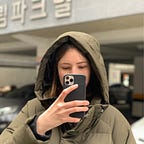In addition to other feedback last week, we were warned that we were beginning to make assumptions about language learners and their motivations to study. So, we decided to conduct some Directed Storytelling to help us uncover biases by asking specific questions about their processes.
Directed Storytelling
We managed to gather 11 participants, and asked them about their most recent language learning experience. Our goal was to understand their process, and what parts of their language learning journey they found the most and least valuable. We probed for underlying reasons behind their explanations by giving thoughtful prompts, to guide and frame their thought processes.
We were able to find that many of the participants noted the necessity of visual parts in learning, as it helped with association, emotional attachment, and context. Without, it was difficult to associate words with what they mean in their heads. There was also a lot of emphasis on needing a person to practise with — someone who can provide a comfortable environment where you can make mistakes and get corrected.
Finally, several participants noted that they missed the cultural aspect with their learning methods. Without culture present they felt isolated from the language which lowered their motivation.
We found these results insightful, however they also left us with many questions. Although an important step in the process, it had unfortunately not helped us narrow our focus as of yet, instead helping us inform and back up decision-making later down the line.
As advised by our tutors last week, we now needed to focus on the transfer between the physical room and the digital network — needing to think about how people go from having a conversation to seeing information appear — organised — on their phones.
We begun making a basic timeline of how the process would look start to finish, however, we quickly started to feel overwhelmed. We still did not know how, why or where these two people would be talking, and that it isn’t very likely that someone might go to a place with lots of visualisation technology just to have a conversation. In our Tuesday feedback session with John, he mentioned that the visuals might also become a distraction: if you’re trying to listen or talk to someone and pictures start suddenly appearing on the walls that might end up being more confusing than helpful.
We realised that it would perhaps be better to focus on the digital library part. Not wanting to stray too far away from our paper prototype last week, we decided to explore the social circumstances of a language a little further. This made us think about how people might survive in places where they don’t know the language, yet have to do language intensive things. It would be interesting to explore what happens in these situations, and figure out parts that could be saved to the library —somehow saving the context that exists within the situation, even when it no longer exists in the present moment.
Wanting to explore this functional aspect, we needed to prototype designs that perform well for specific needs. To do this, we needed to first define some of these specific needs.
To do this I chose an example conversation, “Offering someone tea or coffee”, and tried labelling all the things I could from it. I separated things within that situation out into sections: words (adjectives, nouns and verbs), social (timing), culture (politeness), technical (conditional and imperative tenses) and situational (location-based).
I presented my brainstorm to my group, who agreed that we should have done this earlier as it helped us develop our understanding of the topic and its design opportunities.
>>> For my next post on the project, click here.
